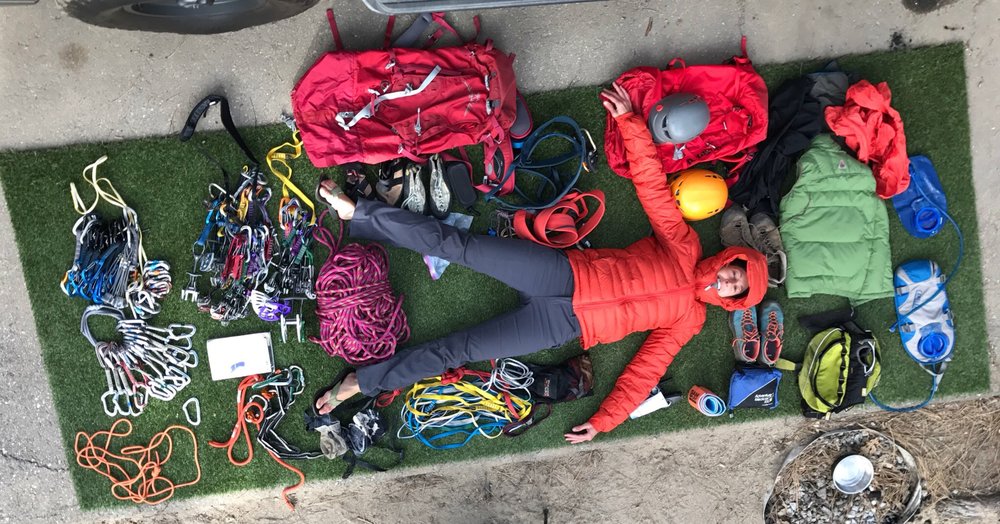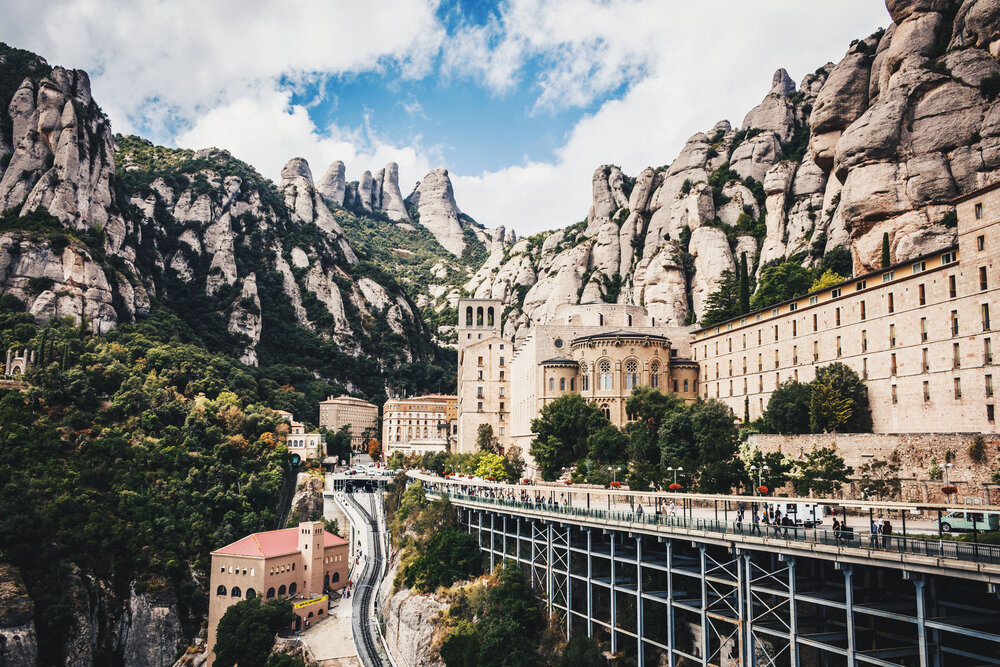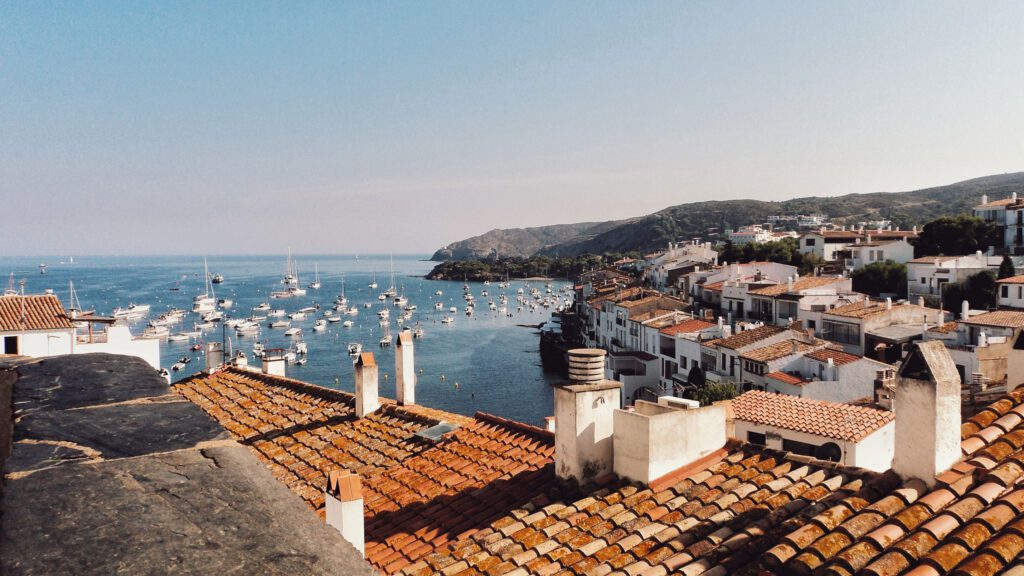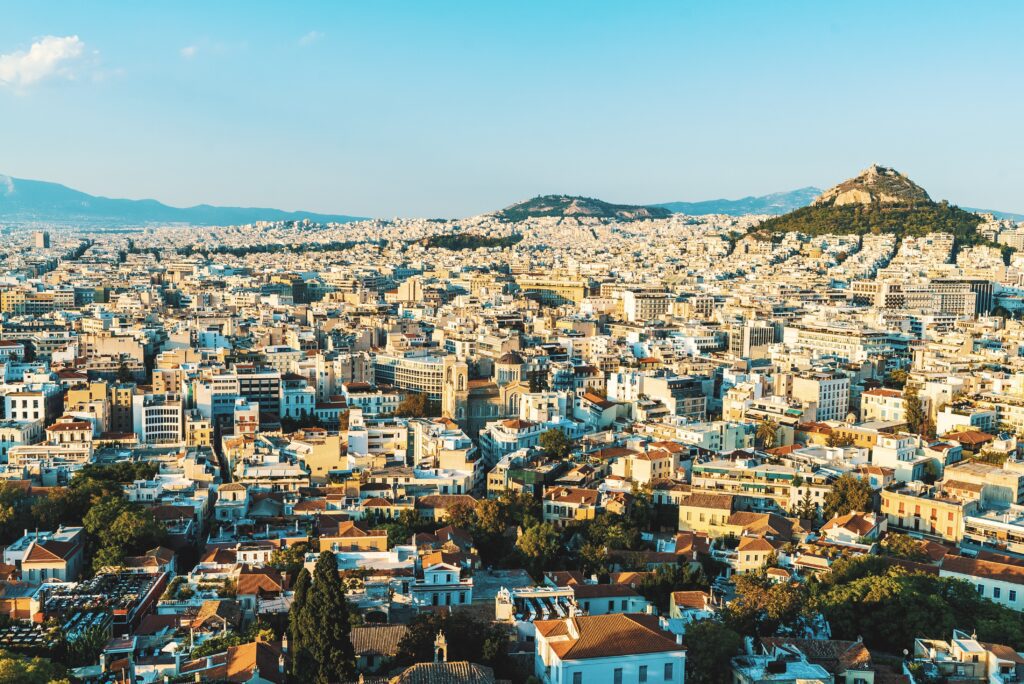The Digital Nomad Visa: The Truth Behind What it Takes To Work Remotely in Europe
The rise of the digital nomad visa has opened new opportunities for Americans. So if you’ve been considering a move to Europe and can work remotely, we’ve packed this blog with the truth of what it takes to apply for a digital nomad visa.
We do not want to sugar-coat the amount of time and effort you’ll need to invest in this process. Many blogs gloss over the stack of documents you need to present at your visa appointment, if you can even get an appointment! From tax returns to notarized diplomas and transcripts, proof of international health insurance, and a registered rental contract, the documents you need to submit can be overwhelming. It was for me. Start the process VERY early, 6-9 months before you’d like to arrive in Europe.
In this blog, I’ll guide you through the steps to becoming a digital nomad in the EU, with a special focus on Italy’s digital nomad visa process. We just finished this process and have our visas. Yes, Top Rope Media is going global! We’ve lived and worked abroad, but this time feels different and much more labor-intensive.
Here’s what this blog will cover:
- The Surge of the Digital Nomad Visa
- Choosing Which Country to Apply to
- Items You Will Need to Apply for a Digital Nomad Visa
- How to Find a Place to Live
- Getting International Health Insurance
- Traveling to the EU and Getting a Residency Permit
- Getting a Driver’s License and Buying a Car Abroad
- Setting up a Bank Account
- Getting a Phone Number and Receiving Mail
- Taxes and Legal Responsibilities
I’ve included lots of action items (did I mention this is a long process?), handy links, things to consider, and all the tools we’ve used so far to apply for a digital nomad visa. So andiamo, let’s go!
1. The Surge of the Digital Nomad Visa
The ability to work remotely and be a digital nomad became very popular during the pandemic. More people could work from home, or remotely, as long as they had a good wifi connection. In 2023, 17.3 million Americans identified as digital nomads, up 131% from 2019! While not all remote workers apply for digital nomad visas, the number of applicants has grown. In addition, 67 countries now offer a digital nomad visa, indicating a strong demand worldwide.
The surge in visa applications from America for EU countries can be attributed to a combination of political, economic, and quality-of-life factors. The chance to travel and work without the high cost of living, healthcare, gasoline, or food? Combine good old inflation with the current political climate, and many of us are ready to pack our bags!
Why is the European Union (EU) a top destination for digital nomads? Besides an escape from your everyday, it offers the opportunity to experience different cultures, languages, food, and perhaps a higher quality of life. However, making the leap to being a remote worker in the EU requires careful planning, especially when applying for a digital nomad visa.

The ability to live and work remotely has allowed photographer Kat Reynolds to travel worldwide. She captured this image in beautiful Positano, Italy!
2. Choosing Which Country to Apply for Your Digital Nomad Visa
While many EU countries offer digital nomad visas for Americans, three countries stand out for their benefits, cost of living, and beauty:
Italy
Known for its rich culture, world-class cuisine, and relaxed lifestyle, Italy introduced a 1-year digital nomad visa in April 2024. It’s an attractive option for remote workers, but Italy’s visa requirements are stringent. For instance, you must be highly skilled, and show proof of your professional qualifications, among many other items.
Portugal
A favorite among expats, Portugal began offering a digital nomad visa in October 2022. With tax incentives and an affordable cost of living, especially in cities like Lisbon and Porto, Portugal allows remote workers to relocate for 1-2 years.
Spain
Spain launched its digital nomad visa in January 2023, allowing non-EU remote workers and freelancers to live in Spain while working for foreign companies. With a mix of vibrant cities like Barcelona, Madrid, Granada, and Bilbao, a warm climate, and peaceful coastal retreats, Spain is high on everyone’s list!
Besides Italy, Spain, and Portugal, other popular EU countries where you can apply for a digital nomad visa include Greece, Croatia, Malta, and Hungary. Many other countries offer long-stay visas, but not specifically a digital nomad or remote worker visa. Therefore, if you have a place in mind, find out their visa requirements. If you are still unsure of the best country to live as a digital nomad in the EU, bookmark this page to read these articles later:
- Top Digital Nomad Visas in Europe 2025
- Best 6 EU-Based Digital Nomad Visas for 2025
- Europe’s Best Cities for Digital Nomads
- A Digital Nomad Visa Will Allow You to Live Rent Free on this Beautiful Italian Island
Why We Chose Italy
After you decide which country you plan to do your remote work in, visit their Consulate’s website to learn about the visa application process for Americans. We chose Italy and began our process at the Italian Consulate in Los Angeles, on the Digital Nomad/Remote Workers Visa page.
We chose to work remotely in Italy for several reasons:
- We have lived in Italy before, for 4 months during the 2006 Winter Olympics in Torino!
- My grandparents on my father’s side immigrated to America from Southern Italy – I even wrote a book with my Dad about their journey!
- We love the Dolomite region and its easy access to skiing, hiking, rock climbing, and mountain biking.
- The Winter Olympics will be back in Italy in February 2026 in Milano-Cortina!
- We are passionate about cycling and soccer (aka football) the two biggest sports in Italy.
- The Italians take it slow and practice La Dolce Far Niente (The Sweetness of Doing Nothing) better than anyone else!

Rock climbing and mountaineering are some of our favorite activities, and the Alps and Dolomites are the birthplaces of these sports!
3. Items You Will Need to Apply for a Digital Nomad Visa
Europe’s digital nomad visas are designed for Americans and other non-EU remote workers. Once your visa application is approved, you can stay for up to a year in the ‘Schengen’ – meaning any country in the European Union. In addition, most countries will let you renew your visa each year without needing to return to the U.S.
To apply for a digital nomad visa, you’ll need to begin the process in the U.S. and find the closest Consulate to where you live, and based on the EU country you’ll be applying to. Each visa application process will be slightly different, but be prepared to gather a stack of documents. I’m not kidding here.
Start to gather the following (we’ll dive more into some of these items below):
- Identification: A valid passport that does not expire until well after your intended stay
- Proof you live in the Consulate’s Jurisdiction: Driver’s license
- A completed Visa Application & Passport Photo: Here’s the Italian National Visa Form
- Prove you are a Highly Skilled Worker: Submit diplomas, transcripts, certifications, licenses first to the Education Office to get a Declaration of Value.
- Proof of your Employment: contract from employer, pay stubs, invoices, business ownership
- Proof that you Meet the Minimum Income Requirements: €2,500/mo per person, shown in personal bank statements
- Proof of Accommodation: a 12-month rental contract, filed with the Italian Tax Authority
- International Health Insurance covering at least €30,000 in medical expenses
- A Clean Criminal Record: fingerprints and background checks are done at the office
- A Fiscal Code or Codice Fiscale
- A Booked Flight to Your Destination: Get a refundable/changeable ticket
- A Postage Paid Return Envelope (USPS Priority Mail) for them to mail your passport back to you once your visa is approved
- Visa fees– a cashier’s check, cash or money order
The full description of everything you’ll need for an Italian digital nomad visa application can be found on the Digital Nomad/Remote Workers Visa page on the Italian Consulate in Los Angeles’ website. Once you are close to having all of your documents in order, book a visa appointment.
Italy’s visa appointments can be booked through the Prenot@mi website and are VERY hard to get. It is not uncommon to wait 6 weeks for an appointment! I refreshed the Italian Consulate appointment website, Prenotami, at least a dozen times a day! Try in the afternoons, between 2-3pm, as cancellations are often added at midnight Rome time.
Please keep in mind, the Italian Digital Nomad Visa is VERY new. The list of requirements is always changing, and it may not be exactly what the Consulate requires on the day of your appointment. I found out the hard way at my first visa appointment, and I wrote this blog to help others prepare.
Some have suggested using an Italian immigration attorney, or someone very familiar with the process for your particular country, to complete the application and help you collect the documents. It certainly does not guarantee you will get approved, but it might save you some time and relieve some stress!
4. How to Find a Place to Live to Satisfy Digital Nomad Visa Requirements
To meet the Italian Consulate’s visa application requirements, you must provide proof of long-term accommodation. In addition, it must cover the entire length of your visa, the rental contract must be exactly like the example featured on their website, and it must be registered with the Italian Tax Authority- the Agenzia della Entrate. Many other digital nomad EU visa applications will have the same requirement, and this is often the most challenging part of your visa application process. Crashing on a friend’s couch will not suffice.
Start browsing long-term rental websites that list homes and apartments available for more than 30 days in the country you’d like to relocate to. Here are a few rental listing websites we’ve been using for Italy. In addition, some of these websites have listings or separate websites for other countries.
Websites for Long-term Rentals in Italy:
Using VRBO or Airbnb to Find a Long-Term Rental
While you can use VRBO or Airbnb, you will need to transition to a long-term lease. In addition, the Italian Consulate will not accept say a 3-month rental booking on Airbnb, which would not cover your full visa stay and is not registered with the Italian Tax Authority- Agenzia della Entrate.
Keep in mind, while Airbnb or VRBO might seem to be the easiest, most secure option, you are subject to Airbnb’s fees and the higher short-term rental rates. For example, we found a beautiful 2-bedroom, 1-bath in Cortina d’Ampezzo listed on Idealista.it for €3,500/month, yet on Airbnb it was €6,000/month!!
Lastly, when you search for a rental for a month or longer on Airbnb or VRBO, your search will not yield a lot of properties. We found many owners list short-term stays only, hence why they use Airbnb!
Working With a Real Estate Agent or Real Estate Agency
You might also feel more comfortable working directly with a real estate ‘Immobiliare’ agent. We began by building a list of real estate agents throughout the Dolomite region. In addition, we found it very helpful that most real estate agencies will list properties for sale and for rent on their websites. This is great if you are looking to develop a relationship with an agent for a potential home purchase later down the road!
Things to Consider During Your Long-Term Rental Search
We started using Immobiliare and Idealista to find an apartment that satisfies our Italian digital nomad visa application. Once you begin using Immobiliare and Idealista, you can download the app to your phone, set up a profile, start your search, save your favorites, and use their chat/message tools to communicate with property managers.
We recommend you view properties in Google Maps, and ensure they meet your requirements for things like walkability to the city center, transportation, etc. In addition, ensure the property description matches the photos, and they can offer you a monthly or annual rental contract.
You will notice some of the listings are managed by private individuals, and others by real estate agents. Regardless of who you’re interacting with, keep the conversation light, do not exchange any personal information other than what you are looking for in an apartment or home, and do not make any payments or bank transfers outside the app.
In addition, we’ve noticed some people will ask you to switch over to WhatsApp to continue the conversation. Again, be very careful with the information you provide, and do not send any bank or credit card information!
Here are a few more steps to consider before you agree to a long-term rental contract and make a deposit:
- Can you hop on a video call, get to know the property owner, and ask questions?
- Is wifi included in the price? How about heat, A/C, and electricity?
- Ensure there is language in the rental contract about their cancellation policy!
- How will you pay the rental deposit? Can you use PayPal, a credit card, or your bank?

Cities like Barcelona and Madrid are great home bases for digital nomads who want to explore Spain. We traveled to Montserrat from Barcelona to visit the monasteries, hike, and rock climb!
5. Getting International Health Insurance for a Digital Nomad Visa
An Italian digital nomad visa application requires you to have international health insurance. International health insurance provides ongoing healthcare coverage rather than just trip interruption coverage and emergency care.
International health insurance is also different than your current U.S. healthcare policy, which often does not cover you outside the U.S. Yes, you may be able to submit your receipts to get reimbursement, but the Italian Consulate will not accept a copy of your health insurance card as proper insurance coverage.
The number one reason for the denial of an Italian digital nomad visa application is the lack of appropriate health insurance. Therefore, here are the top 5 International Health Insurance providers:
- Cigna Global – Comprehensive international health plans tailored for expats.
- SafetyWing – Affordable and designed for digital nomads, limited coverage. Safety Wing was not accepted by the Italian Consulate in Los Angeles.
- Allianz Care – Flexible plans covering outpatient and emergency services only.
- AXA Global Healthcare– Comprehensive coverage, expensive, but you can set a high deductible to keep monthly payments low. This is the health insurance we decided to use.
- GeoBlue by Blue Shield– Good coverage options, backed by a familiar brand, but they require you to keep your US Health insurance!
We have also read that once you have a residency permit, a Permesso di Soggiorno, you can opt into Italy’s national healthcare system (Servizio Sanitario Nazionale, or SSN) for a fee. We’ll review getting a residency permit next!

If you are choosing to live in a smaller town, like one of those along the Costa Brava in Spain, read our blog! Spain’s ‘Wild Coast’ is a perfect place for cyclists and those who love the seaside!
6. Visa Approval Process: Be Patient and Persistent!
The digital nomad visa application process can take anywhere from 30-120 days, so start the process early!! We learned that you may not meet all their requirements during your first appointment and will need to submit additional documentation at a follow-up appointment. Or three follow-up appointments! The Italian Digital Nomad Visa is new, and a woman at the Italian Consulate in Los Angeles mentioned they had only processed 10 applications in 2024- and only 6 of them were approved!
Be patient with the process, and stay focused. keep refreshing the Prenotami website for appointments! We had 3 appointments over 4 months before our visas were approved. Lots of paperwork and sleepless nights, but when the lady at the Consulate finally approved us, I cried! It felt simply amazing after all the work we’d done.
Often they will collect your passport at your final appointment, and mail it back to you with the visa stamped inside. You are then ready to take the next step!
7. Getting a Residency Permit: Permesso di Soggiorno, in Italy
Within 8 days of arriving in Italy, you must apply for a Permesso di Soggiorno (residency permit) at the Questura or local police station. Pick up an application packet at the Poste Italiane (post office) nearest you, and you will submit almost everything you submitted during your visa application process. Therefore, it might be a good idea to make an extra copy of your full visa application packet before you turn it in at the Consulate!
Each EU country will be different, but almost all will require you that you apply for temporary or permanent residency once you arrive. A Permesso di Soggiorno is required in Italy for all long-term stays. It also gives you access to public services. Once you submit the application for your Permesso di Soggiorno, it can often take months. You’ll be able to check your application status on the Questura’s website. But good news, you can renew your visa/Permesso di Soggiorno in Italy. You will not need to return to the U.S. and go through the whole visa application process again! Each EU country is different, so be sure to check the requirements for extending your stay.

We lived in Athens during the 2004 Summer Olympics and found it easy to get around, pick up a bit of the language, and eat all the Greek food we wanted!
8. Buying or Renting a Car as a Digital Nomad
If you haven’t spent much time in Europe, you’ll learn quickly that public transportation is excellent in most cities. Especially when compared to the U.S. transportation infrastructure. There are high-speed trains, buses, and in our case in the Dolomites, ski lifts, and cable cars that allow you to move between different towns! A car isn’t necessary unless you’re in a small town or rural area.
If you plan to drive while living abroad, you can use your home country’s license with an International Driving Permit (IDP). Plan to stay longer and renew your digital nomad visa after one year? Take the country’s driving test to avoid penalties!
If you want to buy a car, consult your Consulate’s website for more information. For Italy, you need a residency permit, the Permesso di Soggiorno, and an Italian tax code, the Codice Fiscale, to purchase a vehicle.
9. Setting Up a Bank Account
To receive payments, pay rent, and manage finances while in the EU, you’ll most likely need a local bank account. The best options in Italy include traditional banks like UniCredit and Intesa Sanpaolo, which require in-person visits and more paperwork.
However, online banks like N26, Wise, and Revolut are easier for non-residents and digital nomads. In addition, Citibank, Bank of America, and Chase have locations in Milan and Rome, as well as throughout Europe!

Living in a larger city like Athens, Milan, or Rome makes it easier to get around without a car, and find banks, post offices, and many other services you’ll need to establish residency and begin work.
![]()
10. Getting a SIM Card and Receiving Mail as a Digital Nomad
If you want to get a local phone number, get a SIM card when you arrive. Italian SIM card providers include:
- TIM (best coverage)
- Vodafone (good for international calling)
- Iliad (budget-friendly, no contracts)
In addition, your current phone, as long as it’s unlocked from your carrier, may have an eSim. This makes things even easier as you can buy an eSim from Nomad or SimOptions, to name a few, and simply toggle between both SIM ‘cards’ on your same phone.
You can also plan to use WhatsApp to communicate with friends and family, use Google Meet for work calls, and you might also consider getting a VPN- a virtual private network. We use Express VPN.
To receive mail and packages while living abroad, you’ll likely need to set up a P.O. Box. In Italy, you can rent a Casella Postale (PO Box) at Poste Italiane. You can also ask your property manager if packages and mail can be sent to your new address, and then establish this as your address at the local post office.
11. Understanding Taxes and Legal Responsibilities While on a Digital Nomad Visa
Ask your tax advisor what you are legally responsible for while working remotely in the EU. For example, if you stay in Italy for more than 183 days per year, you become a tax resident and must pay taxes on worldwide income. That means you are taxed on the income you make from your U.S. clients while abroad. In addition, you will pay taxes on any Italy-sourced income from local businesses you may begin to work with in Italy. Italy’s tax rate is higher than the U.S., averaging 23-43%!
However, Italy offers tax incentives for new residents, highly skilled workers, or high-net-worth individuals who relocate to Italy. In addition, if you are already paying taxes on your income in America, you may be exempt due to their double taxation treaties. Learn more on the Agencia de Entrate (Italian Tax Authority) website.
Before you depart, consult a tax expert to optimize your tax situation and ensure compliance while on a digital nomad visa.
Final Thoughts on Digital Nomad Visas and Working Remotely in Europe
Being a digital nomad in Europe can allow you to explore beautiful cities, idyllic countryside hamlets, and enjoy world-class cuisine. However, the visa application process is long, it’s hard, and you should not assume you will get approved simply because you’re a remote worker or freelancer. If it were that easy, everyone would do it.
Yet whether you settle in historic Florence, vibrant Lisbon, or the peaceful countryside near Madrid, working abroad as a digital nomad can be both professionally rewarding and personally enriching. If you’re searching for more blogs on other destinations that might make a great home for a digital nomad, here are a few places we love:
- Traveling to Sayulita, Riveria Nayarit, Mexico
- Spain’s Costa Brava, the Wild Coast north of Barcelona
- Adventure Travel in Costa Rica
Thanks for reading, Buona fortuna, and more to come!
-Meredith Caccese McConvill, Top Rope Media
Recent Comments